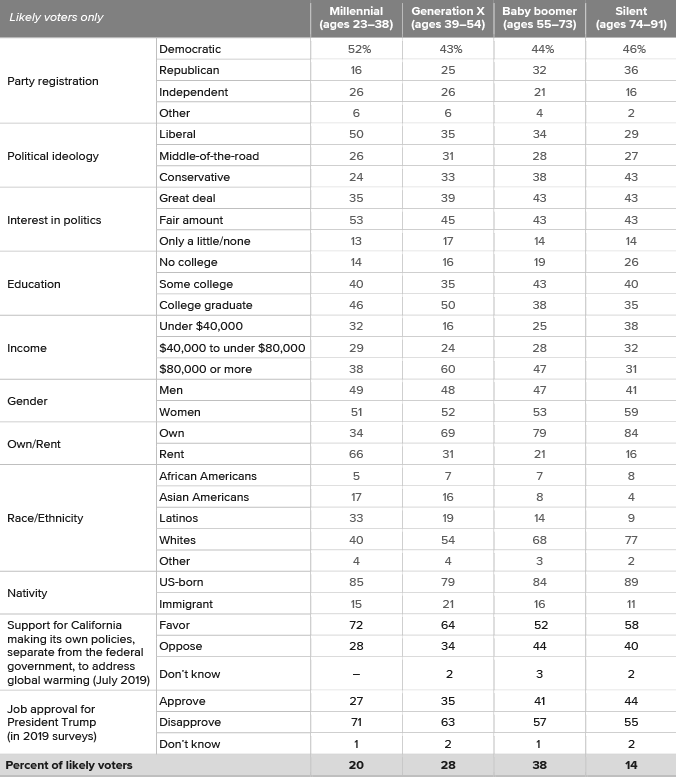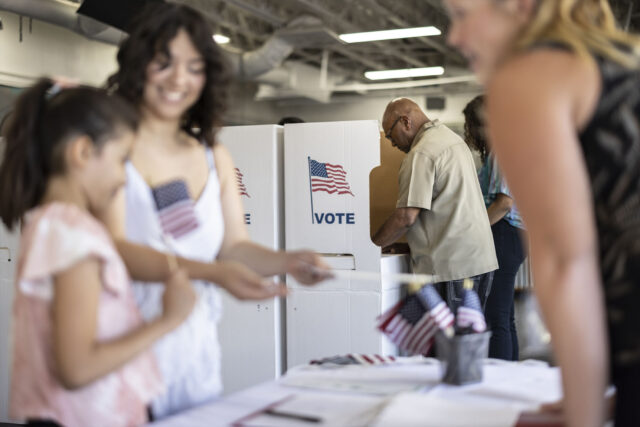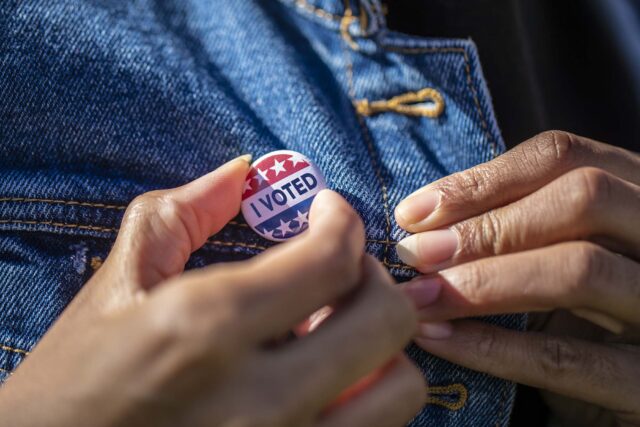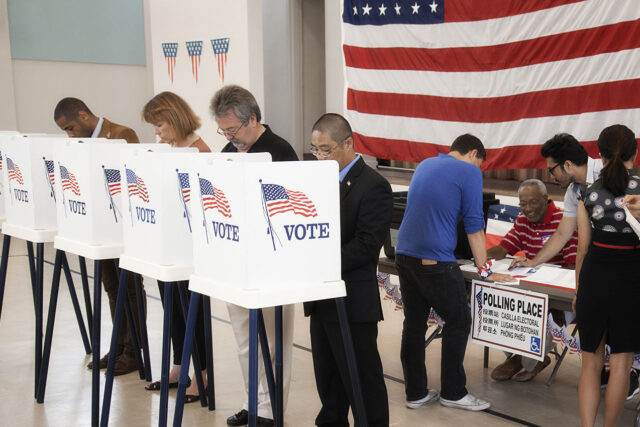-
- Millennials are less likely to register and vote than older Californians.
Millennials (ages 23–38), generation Xers (ages 39–54), and baby boomers (ages 55–73) each account for about three in ten California adults, while the silent generation (ages 74–91) comprises a much smaller share. Six in ten millennials (59%) and gen Xers (63%) are registered to vote, compared to 79% of baby boomers and 91% of silents. The likelihood of voting also increases with age: only three in ten millennials are likely voters, compared to eight in ten silents. Notably, baby boomers (38%) make up the biggest share of the state’s likely voters, followed by gen Xers (28%), millennials (20%), and silents (14%). - Millennial voters are more liberal than older Californians and less likely to be Republican.
Across age groups, millennials are the most likely to say they are very liberal or somewhat liberal (50%, 35% gen X, 34% boomer, 29% silent) and the least likely to call themselves very or somewhat conservative (24%, 33% gen X, 38% boomer, 43% silent). However, at least a quarter of millennials (26%), generation Xers (31%), boomers (28%), and silents (27%) consider themselves to be politically moderate. Across age groups, at least four in ten likely voters are Democrats, with Republican registration more common among older voters (16% millennial, 25% gen X, 32% boomer, 36% silent). The share of independent likely voters (also known as “decline to state” or “no party preference” voters) decreases with age (26% millennial, 26% gen X, 21% boomer, 16% silent). - Millennial voters have more favorable views on immigration than older Californians.
Four in five millennial likely voters (81%) say immigrants in California are a benefit to the state because of their hard work and job skills, while fewer than two-thirds in other age groups say the same (64% gen X, 61% boomer, 58% silent). Millennials (71%) are also the most likely to favor California making its own policies—separate from the federal government—to protect the legal rights of undocumented immigrants in the state (53% gen X, 48% boomer, 40% silent). An overwhelming majority of millennial likely voters (76%) oppose building a wall along the entire border with Mexico (60% gen X, 63% boomer, 52% silent). - Most millennial voters want California to set its own course on climate change.
At least six in ten across age groups say the effects of global warming have already begun (66% millennial, 70% gen X, 67% boomers, 65% silents). Seven in ten millennial likely voters say global warming is a very serious threat to California’s future economy and quality of life, and seven in ten favor SB 32’s greenhouse gas emission-reduction goal. Across age groups, millennials are the most likely to favor California making its own policies—separate from the federal government—to address global warming (72%). Approval of President Trump is lowest among millennials: in our 2019 surveys, 27% approve (35% gen X, 41% boomer, 44% silent). - Millennial voters support health reform efforts at the state and federal levels.
Majorities of millennial (60%), gen X (57%), and boomer (54%) likely voters say that it is the responsibility of the federal government to make sure all Americans have health care coverage (45% silent). Solid majorities of millennials (61%) have a generally favorable opinion of the Affordable Care Act, while fewer older Californians hold this view (51% gen X, 55% boomer, 49% silent). Further, most millennial likely voters (74%) favor Governor Newsom’s proposal to expand Medi-Cal coverage to low-income young adults (ages 19–25), regardless of immigration status (52% gen X, 50% boomer, 33% silent). - Millennials are more likely to be nonwhite.
White likely voters outnumber nonwhites across all age groups, and the share of whites in each group increases with age (40% millennials, 54% gen Xers, 68% boomer, 77% silent). In contrast, the share of Latino likely voters is highest among millennials (33%) and decreases with rising age (19% gen Xers, 14% boomer, 9% silent). Asian American likely voters make up a larger share of millennials (17%) than boomers (8%) or silents (4%). Homeownership among likely voters increases with age, and the share of likely voters without any college education is highest among the silent generation.
- Millennials are less likely to register and vote than older Californians.
Millennial voters and California politics

SOURCES: Nine PPIC Statewide Surveys from September 2018 to July 2019, including 15,165 adults and 9,651 likely voters.
NOTES: “Likely voters” are registered voters meeting criteria on interest in politics, attention to issues, voting behavior, and intention to vote. For a full description of these criteria and regional definitions, visit www.ppic.org/wp-content/uploads/SurveyMethodology.pdf. There is no prevailing consensus among researchers concerning the definitions for each of these generational groups. Our definitions are informed by the US Census Bureau and are as follows: millennial (ages 23–38), generation X (ages 39–54), baby boomer (ages 55–73), and the silent generation (ages 74–91).
Sources: Nine PPIC Statewide Surveys from September 2018 to July 2019, including 15,165 adults and 9,651 likely voters.
Topics
Health & Safety Net Political Landscape Population Statewide Survey





